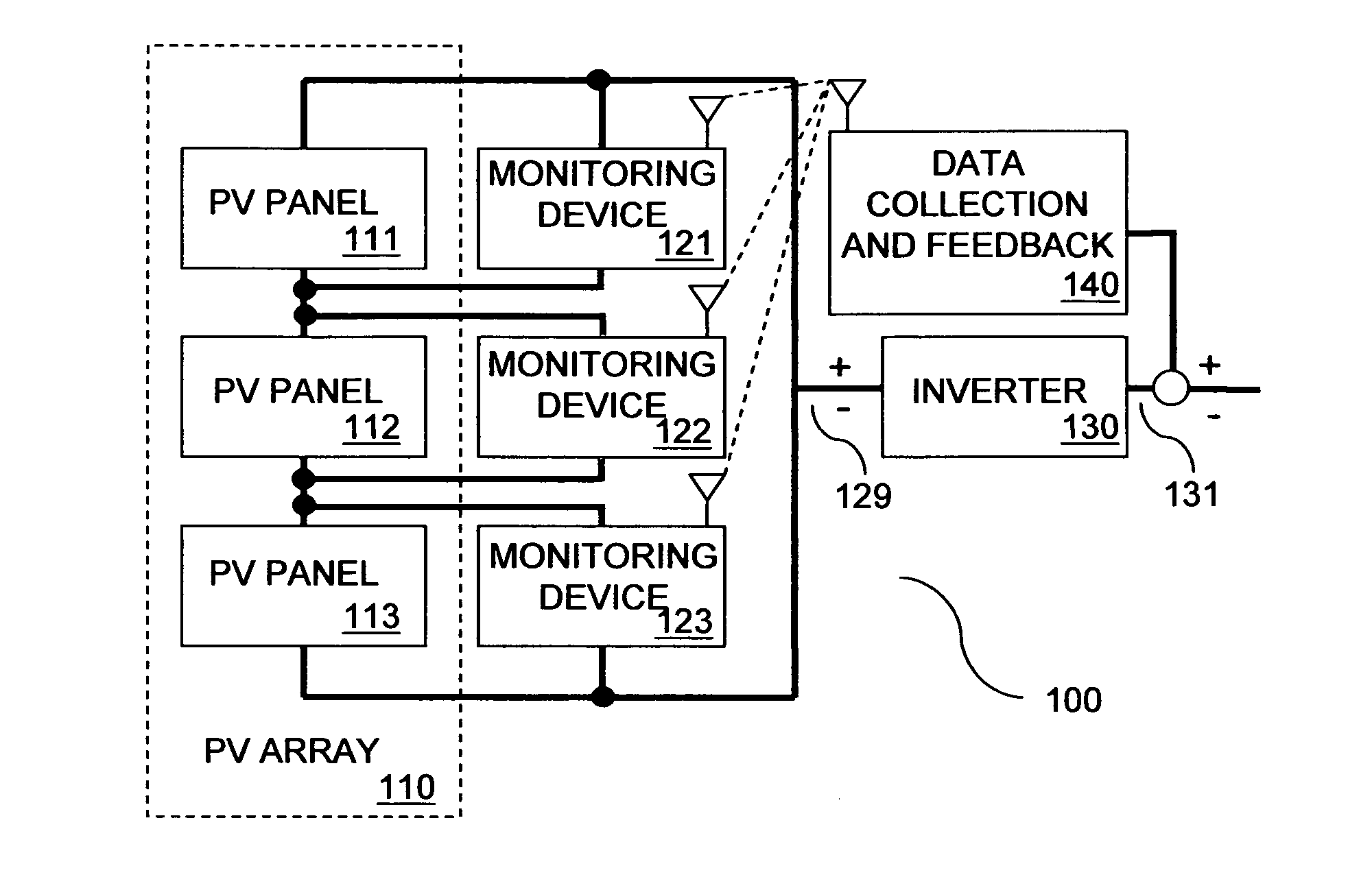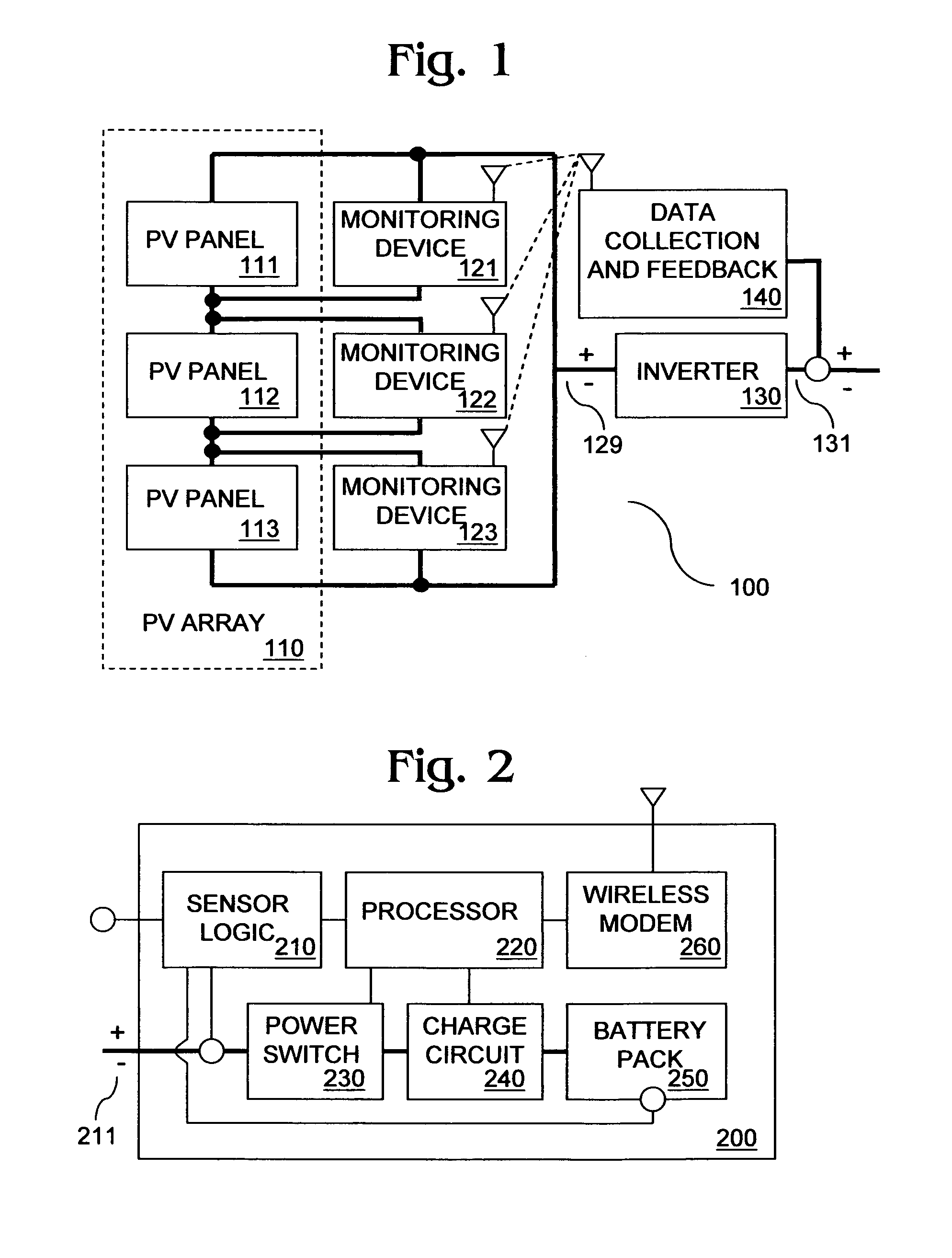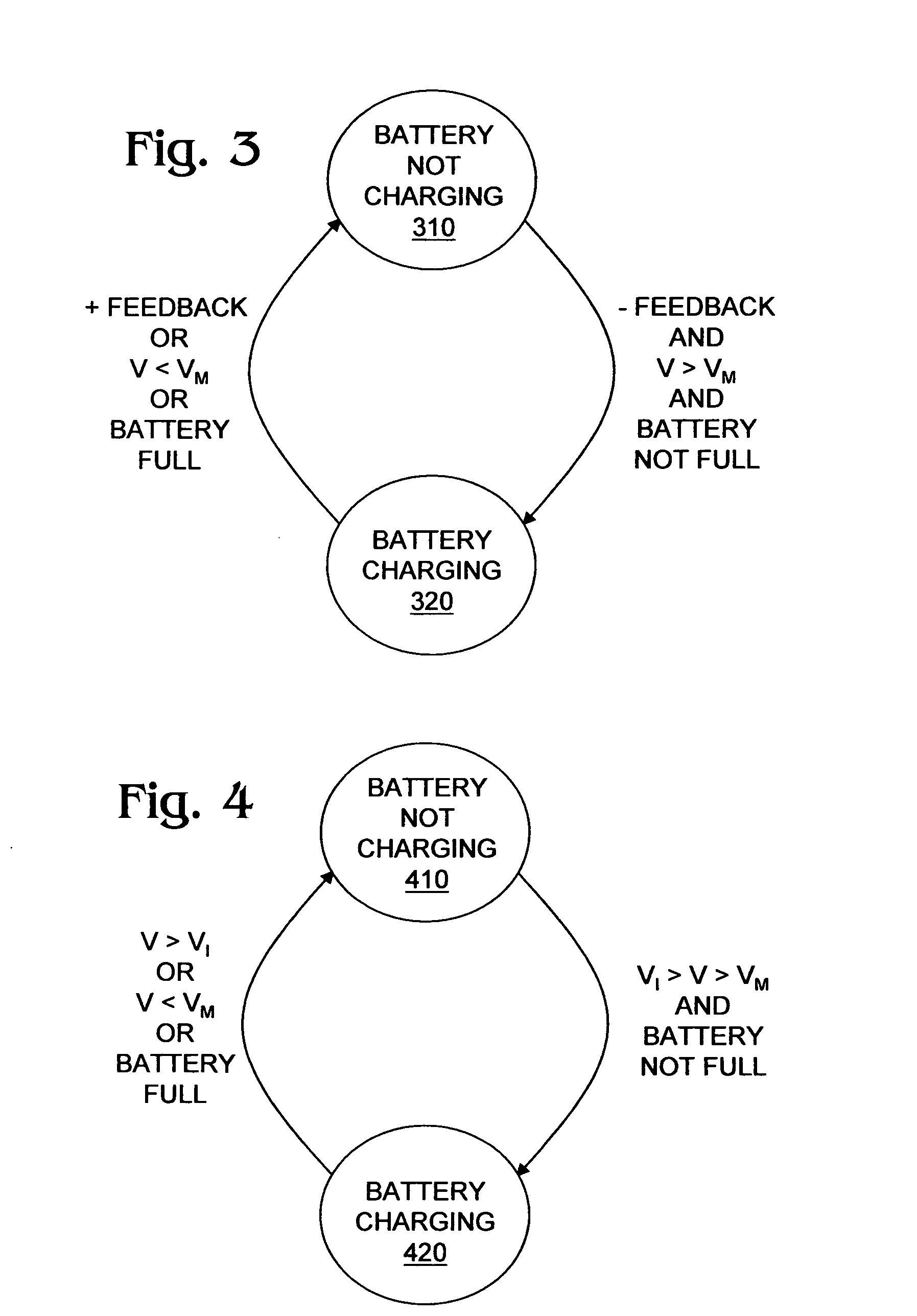Methods and systems for powering auxiliary devices in photovol taic system
a photovoltaic and auxiliary device technology, applied in the field of photovoltaic systems, can solve the problems of significant field maintenance problems, inoperable auxiliary devices, and temporary loss of operability of auxiliary devices, and achieve the effect of reducing field maintenance requirements and eliminating bias in pv system performance data
- Summary
- Abstract
- Description
- Claims
- Application Information
AI Technical Summary
Benefits of technology
Problems solved by technology
Method used
Image
Examples
Embodiment Construction
[0035]FIG. 1 shows a PV system 100 in some embodiments of the invention. PV system 100 includes a PV panel array 110 having a multiple of PV panels 111, 112, 113 coupled to an inverter 130 over power lines. PV panels 111, 112, 113 have respective monitoring devices 121, 122, 123 coupled thereto. Monitoring devices 121, 122, 123 are wirelessly coupled with a data collection and feedback system 140. Although monitoring devices 121, 122, 123 are shown directly coupled with data collection and feedback system 140 over a wireless link, devices 121, 122, 123 and system 140 may be separated by intervening communication nodes.
[0036]PV panels111, 112, 113 capture incident sunlight, convert it to DC power and supply DC power to inverter 130 via inverter input terminals 129. The voltage of the DC power supplied by PV panels 111, 112, 113 is measured by monitoring devices 121, 122, 123, respectively. The DC power supplied to inverter 130 varies with incident sunlight. When incident sunlight is ...
PUM
 Login to View More
Login to View More Abstract
Description
Claims
Application Information
 Login to View More
Login to View More - R&D
- Intellectual Property
- Life Sciences
- Materials
- Tech Scout
- Unparalleled Data Quality
- Higher Quality Content
- 60% Fewer Hallucinations
Browse by: Latest US Patents, China's latest patents, Technical Efficacy Thesaurus, Application Domain, Technology Topic, Popular Technical Reports.
© 2025 PatSnap. All rights reserved.Legal|Privacy policy|Modern Slavery Act Transparency Statement|Sitemap|About US| Contact US: help@patsnap.com



